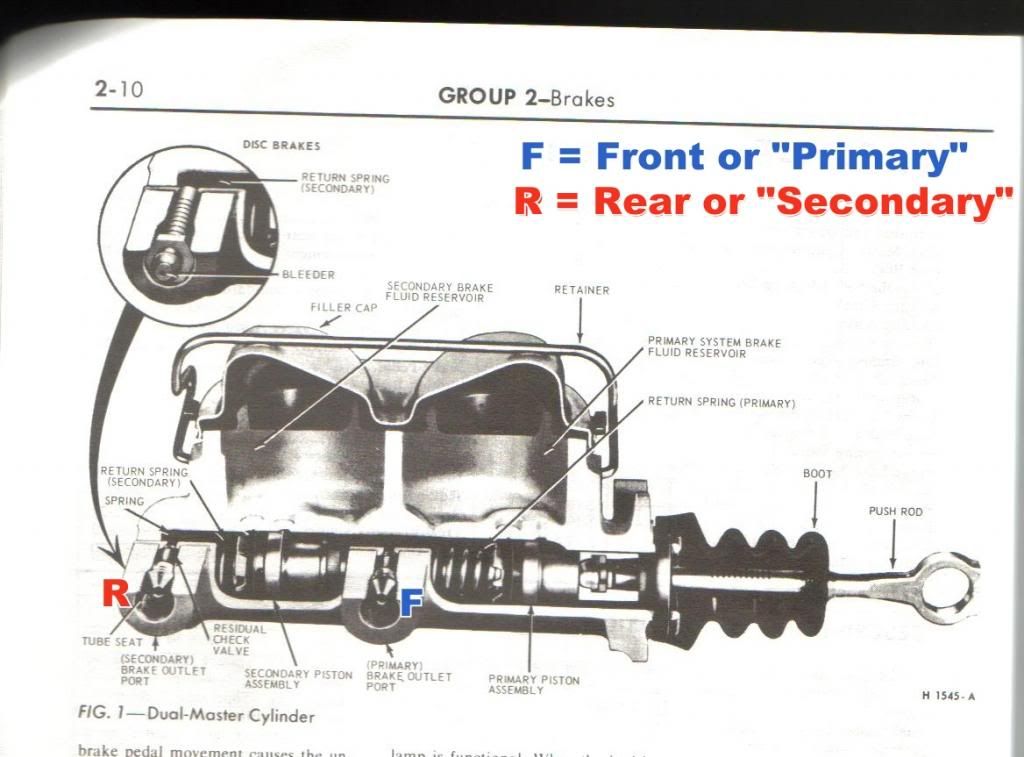So I've been trying to think of a solution to this that requires little to no modification to the existing brake lines. I figure there must exist a compatible MC with the outlets on the driver side.
Lo and behold, the power disk/drum MC from a '68 Mustang does have the outlets on the driver side. This is just the first possible solution I've come across, so I figured I'd hop on here, pitch my scheme, and get some opinions.
A few details need addressing:
It has two different sized outlets, I can't check right now but I'm pretty sure the '71's got identically sized outlets. So I'm guessing a adapter or two on the fittings will be needed.
I'm also sure the Mustang has much smaller calipers and therefor doesn't need as much fluid to actuate the piston. So the master cylinder might have too small a bore to support the larger pistoned F150 calipers.
I'm also just assuming the Mustang's (or any Ford) MC will mount up to the donor F150's vacuum booster. (The donor was a 75 or later by the way)
If anyone's got a better solution or experience with this, I'd love to hear it. In the mean time I'll be searching for other options besides the Mustang's MC. Maybe there's even an aftermarket MC that'll fit the bill.
Thanks!
-Evan
***
Edit:
***
Ok, forget my Mustang non-sense. I may have found my solution. The bumpside F250s and 350s had front disks standard later on right? The master cylinders on those have the outlets on the driver side. I figure if the F350's MC bolts right in, it would be the best choice since it's for the heaviest duty truck. Guessing they probably don't differ though.
So does that sound like a plan?
Thanks!
-Evan
***
Edit: Once More
***
I'm looking at this particular product. http://shop.advanceautoparts.com/webapp ... fragment-2
Should work I guess. I know nothing of master cylinder manufacturers. Cardone appears to be an exceptional one.
And just for clarification, the first (primary?) outlet, the one with the larger portion of the reservoir, is for the front disks right?
Thanks.. again!
-Evan




